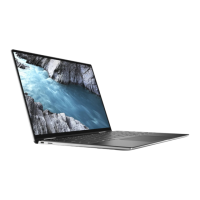Table 15. Diagnostic-light LED codes (continued)
Diagnostic light codes
(Amber,White)
Problem description Recommended solutions
2,4 Memory or RAM (Random-Access
Memory) failure
Reset and swap memory modules among the slots. If
problem persists, replace the memory module.
2,5 Invalid memory installed Reset and swap memory modules among the slots. If
problem persists, replace the memory module.
2,6 System-board or chipset error Flash latest BIOS version. If problem persists, replace
the system board.
2,7 Display failure - SBIOS message Replace display cable (EDP) if possible, otherwise
replace the display assembly (LCD).
2,8 Display failure - EC detection of power rail
failure
3,1 Coin-cell battery failure Reset the CMOS battery connection. If problem
persists, replace the RTC battery.
3,2 PCI, video card/chip failure Replace the system board.
3,3 Recovery image not found Flash latest BIOS version. If problem persists, replace
the system board.
3,4 Recovery image found but invalid Flash latest BIOS version. If problem persists, replace
the system board.
3,5 Power-rail failure EC ran into power sequencing failure. If problem
persists, replace the system board.
3,6 System BIOS Flash incomplete Flash corruption detected by SBIOS. If problem
persists, replace the system board.
3,7 Management Engine (ME) error Timeout waiting on ME to reply to HECI message. If
problem persists, replace the system board.
Recovering the operating system
When your computer is unable to boot to the operating system even after repeated attempts, it automatically starts Dell
SupportAssist OS Recovery.
Dell SupportAssist OS Recovery is a standalone tool that is preinstalled in all Dell computers installed with Windows operating
system. It consists of tools to diagnose and troubleshoot issues that may occur before your computer boots to the operating
system. It enables you to diagnose hardware issues, repair your computer, back up your files, or restore your computer to its
factory state.
You can also download it from the Dell Support website to troubleshoot and fix your computer when it fails to boot into their
primary operating system due to software or hardware failures.
For more information about the Dell SupportAssist OS Recovery, see Dell SupportAssist OS Recovery User's Guide at
www.dell.com/serviceabilitytools. Click SupportAssist and then, click SupportAssist OS Recovery.
Updating the BIOS using the USB drive in Windows
1. Follow the procedure from step 1 to step 6 in Updating the BIOS in Windows to download the latest BIOS setup program file.
2. Create a bootable USB drive. For more information, see the knowledge base article 000145519 at www.dell.com/support.
3. Copy the BIOS setup program file to the bootable USB drive.
4. Connect the bootable USB drive to the computer that needs the BIOS update.
5. Restart the computer and press F12 .
6. Select the USB drive from the One Time Boot Menu.
7. Type the BIOS setup program filename and press Enter.
The BIOS Update Utility appears.
Troubleshooting
69

